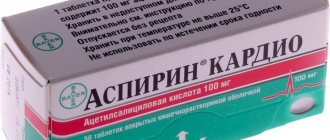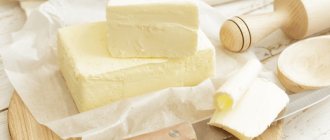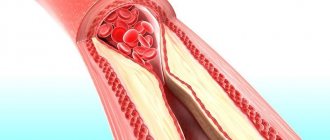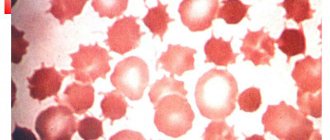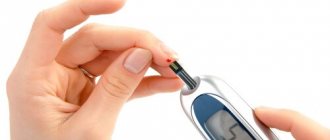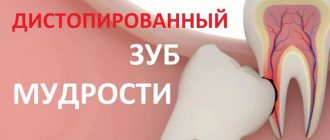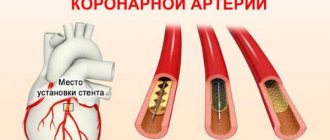Stenting of cardiac vessels is an expensive operation that helps normalize blood circulation, restore arterial patency and prevent the development of serious complications. The intervention involves the introduction of a special balloon with a metal shell into the affected vessel, which expands the lumen of the vascular bed, eliminates atherosclerotic plaques and promotes the proper functioning of the cardiovascular system. However, one operation is not enough for the treatment result to be stable and long-lasting. It is important to strictly follow all doctor’s recommendations, including nutrition. Otherwise, stenting will not give the desired result, and atherosclerosis will progress. This can lead to a number of undesirable consequences - coronary heart disease, acute cerebrovascular accident, myocardial infarction.
Figures and facts
People who have had a heart attack have a higher risk of new cardiovascular events than those who have a healthy heart. Lifestyle changes can significantly reduce your risk. According to statistics, effective prevention of recurrent cardiovascular events through lifestyle changes saves 80,000 lives per year in the United States alone!
According to research, quitting smoking, regular physical activity and diet correction reduce mortality by 20-35%. However, despite such a powerful preventive effect, not all people are in a hurry to switch to a special diet after a myocardial infarction. It is known that only 43.4% of patients with cardiovascular diseases in high-income countries and 25.8% in low-income countries adhere to the principles of a healthy diet. Even after receiving full information about the importance of diet correction and the basic requirements for changing it, many patients simply reduce the caloric content of foods and continue to eat incorrectly. At the same time, the principles of healthy eating are simple both to understand and to implement.
What is a heart attack
A heart attack is damage or destruction of the heart muscle resulting from insufficient blood supply. The main risk factors are high blood pressure, high cholesterol and smoking.
Modern medicine makes it possible to save patients after a heart attack, returning them to their previous state. However, damage to the heart muscle significantly affects the heart rhythm and its functions. Therefore, it is extremely important to control all risk factors to prevent another heart attack. And diet plays a major role in this.
Principles of nutrition
Basic principles of a healthy diet:
- Eating vegetables, fruits, whole grains, nuts and seeds daily
- Predominance of healthy fats in the diet
- Eating fish or seafood two to three times a week
- Limiting consumption of fried and baked foods, especially chips, biscuits, cakes and other baked goods made from white flour
- Limiting salt intake.
An approximate diagram of a healthy diet, built in accordance with the fundamental principles of diet selection for cardiovascular diseases:
- At least five servings of vegetables and two servings of fruit per day. Let us remind you that a serving is approximately as much as fits in the palm of your hand (about 80 g)
- The presence of whole grain bread, durum wheat pasta, and rice in the diet
- Lean meat is preferred (fat should be trimmed and skin removed from poultry). Limiting the consumption of processed meats - sausages, sausages and other deli meats
- The presence of two to three servings of fish and seafood per week in the diet. They can be fresh, canned or frozen
- Presence of legumes in the diet. The menu should include lentils, peas, dried or canned beans, etc. at least twice a week.
- Eating about six eggs per week
- Limiting the consumption of pickled, fatty foods, baked goods, and sweets to a minimum
- Preference for skim milk and lactic acid products over full-fat dairy products
- The presence of unsaturated fats in the diet for cooking. Instead of spread, mayonnaise, margarine, use sunflower, olive, soybean, sesame oil
- Limiting the consumption of sugary drinks and tea, replacing coffee with caffeinated drinks.
Is it necessary to contact a nutritionist or can you create a diet yourself?
Cardiologists strongly recommend contacting nutritionists with appropriate qualifications, who will select a suitable diet for each patient individually. Each person's body is unique, and there is no universal diet. Moreover, many patients are convinced that the diet means serious restrictions and a very meager menu. A nutritionist will help you create a varied, nutritious diet so that proper nutrition does not cause discomfort.
Authorized Products
After myocardial infarction and coronary artery stenting, the daily menu must include:
- vegetables, fruits, berries;
- nuts, beans, greens;
- homemade fermented milk products;
- lean fish, seafood (seaweed, mussels, shrimp);
- unrefined vegetable oil (preferably olive, flaxseed);
- chicken, turkey;
- lean meat - veal, beef tenderloin;
- whole grain cereals.
Important! You should not buy low-fat fermented milk products. They are significantly inferior in taste, are repeatedly processed, and contain a lot of synthetic additives.
Prohibited Products
Men and women who have had a stent or heart attack should completely avoid:
- coffee, cocoa, chocolate, spices;
- fatty fermented milk products - cheese, sour cream, cream;
- fatty meat, fish;
- puff pastries;
- mushrooms and even mushroom broths;
- canned, smoked products;
- mayonnaise, margarine, butter.
It is also worth removing from the menu store-bought sauces, sausages, various chips, crackers, nuts and other products that are not recommended for consumption even by absolutely healthy people.
Foods to eat in moderation
The menu after stenting and heart attack may contain the following products, but in limited quantities:
- semolina, rice cereal;
- whole grain pasta, bran bread;
- honey, sugar;
- grapes, raisins, bananas.
This is a difficult food for the body, the consumption of which should be minimized.
Secrets of cooking healthy food3
A healthy diet is not just about lots of fruits, vegetables, fish and whole grains. This is also the correct heat treatment of dishes, which allows you to preserve the beneficial properties of the products.
How to fry correctly?
- Instead of frying the meat in a pan, it is better to wrap the meat in foil and bake in the oven or grill. It is better to do the same with fish and poultry.
- For frying, you should use sunflower and olive oil. To reduce the amount of oil soaked in food, use a non-stick frying pan.
- It is important to trim the fat from meat before cooking.
How to stew correctly?
- Use minimal salt.
- Refrigerate food immediately after cooking. The fat will harden on the surface, after which it can be removed.
What products are better to choose?
- Use low-fat lactic acid products and natural sugar-free yogurt
- Replace sour cream or mayonnaise with reduced-fat cottage cheese or natural low-fat yogurt
- Give preference to low-fat cheeses
- Use olive and other vegetable oils instead of cooking fats
- Choose lean meat and poultry without skin.
Authorized Products
To minimize the risk of complications, it is necessary to include foods rich in polyunsaturated fatty acids, fiber and complex carbohydrates in your diet. The menu includes soups made with vegetable broth with the addition of well-cooked cereals and potatoes (beetroot soup, cabbage soup, borscht). For second courses, low-fat varieties of white fish (hake, cod, tuna, flounder) and seafood (shrimp, mussels, squid, seaweed), as well as lean varieties of red meat and dietary poultry (turkey, chicken), boiled rabbit or baked, chopped or in pieces. Refined vegetable oils (sunflower, olive), as well as fatty fish: sardines, herring, tuna, salmon (salmon, chum salmon, pink salmon) are recommended as fats.
The diet includes low-fat, unsalted cheeses and low-fat dairy products (kefir, fermented baked milk). Bakery products in the diet are present in the form of whole grain products, wholemeal flour, yeast-free bread, and oatmeal cookies. The volume of fruits and vegetables consumed in any form and method of culinary processing is increasing, as well as freshly squeezed juices from berries (blackberries, strawberries, blueberries) and fruits, walnuts.
Eating fresh herbs and cereal dishes is extremely beneficial. To improve blood circulation, it is necessary to include decoctions of rosehip and wheat bran in the diet. Lipid metabolism indicators are favorably affected by drinking mineral waters, mainly sodium bicarbonate, chloride, sulfate or water of mixed cationic composition (Borjomi, Essentuki No. 4, No. 17, Luzhanskaya, Smirnovskaya).
Table of permitted products
| Proteins, g | Fats, g | Carbohydrates, g | Calories, kcal | |
Vegetables and greens | ||||
| eggplant | 1,2 | 0,1 | 4,5 | 24 |
| beans | 6,0 | 0,1 | 8,5 | 57 |
| zucchini | 0,6 | 0,3 | 4,6 | 24 |
| cabbage | 1,8 | 0,1 | 4,7 | 27 |
| broccoli | 3,0 | 0,4 | 5,2 | 28 |
| Brussels sprouts | 4,8 | 0,0 | 8,0 | 43 |
| green onion | 1,3 | 0,0 | 4,6 | 19 |
| bulb onions | 1,4 | 0,0 | 10,4 | 41 |
| cucumbers | 0,8 | 0,1 | 2,8 | 15 |
| squash | 0,6 | 0,1 | 4,3 | 19 |
| salad pepper | 1,3 | 0,0 | 5,3 | 27 |
| parsley | 3,7 | 0,4 | 7,6 | 47 |
| beet | 1,5 | 0,1 | 8,8 | 40 |
| celery | 0,9 | 0,1 | 2,1 | 12 |
| soybeans | 34,9 | 17,3 | 17,3 | 381 |
| asparagus | 1,9 | 0,1 | 3,1 | 20 |
| tomatoes | 0,6 | 0,2 | 4,2 | 20 |
| Jerusalem artichoke | 2,1 | 0,1 | 12,8 | 61 |
| pumpkin | 1,3 | 0,3 | 7,7 | 28 |
| dill | 2,5 | 0,5 | 6,3 | 38 |
| beans | 7,8 | 0,5 | 21,5 | 123 |
| garlic | 6,5 | 0,5 | 29,9 | 143 |
| lentils | 24,0 | 1,5 | 42,7 | 284 |
Fruits | ||||
| avocado | 2,0 | 20,0 | 7,4 | 208 |
| oranges | 0,9 | 0,2 | 8,1 | 36 |
| grapefruit | 0,7 | 0,2 | 6,5 | 29 |
| pears | 0,4 | 0,3 | 10,9 | 42 |
| lemons | 0,9 | 0,1 | 3,0 | 16 |
| mango | 0,5 | 0,3 | 11,5 | 67 |
| tangerines | 0,8 | 0,2 | 7,5 | 33 |
| nectarine | 0,9 | 0,2 | 11,8 | 48 |
| peaches | 0,9 | 0,1 | 11,3 | 46 |
| apples | 0,4 | 0,4 | 9,8 | 47 |
Berries | ||||
| gooseberry | 0,7 | 0,2 | 12,0 | 43 |
| Red currants | 0,6 | 0,2 | 7,7 | 43 |
| black currant | 1,0 | 0,4 | 7,3 | 44 |
Nuts and dried fruits | ||||
| nuts | 15,0 | 40,0 | 20,0 | 500 |
| flax seeds | 18,3 | 42,2 | 28,9 | 534 |
| fenugreek seeds | 23,0 | 6,4 | 58,3 | 323 |
| sunflower seeds | 20,7 | 52,9 | 3,4 | 578 |
Cereals and porridges | ||||
| buckwheat (kernel) | 12,6 | 3,3 | 62,1 | 313 |
| oat groats | 12,3 | 6,1 | 59,5 | 342 |
| cereals | 11,9 | 7,2 | 69,3 | 366 |
| wheat bran | 15,1 | 3,8 | 53,6 | 296 |
Dairy | ||||
| kefir 0% | 3,0 | 0,1 | 3,8 | 30 |
| kefir 1% | 2,8 | 1,0 | 4,0 | 40 |
Cheeses and cottage cheese | ||||
| cottage cheese 0.6% (low fat) | 18,0 | 0,6 | 1,8 | 88 |
| curd tofu | 8,1 | 4,2 | 0,6 | 73 |
Meat products | ||||
| beef | 18,9 | 19,4 | 0,0 | 187 |
Bird | ||||
| chicken fillet | 23,1 | 1,2 | 0,0 | 110 |
| turkey | 19,2 | 0,7 | 0,0 | 84 |
Eggs | ||||
| eggs | 12,7 | 10,9 | 0,7 | 157 |
Fish and seafood | ||||
| fish | 18,5 | 4,9 | 0,0 | 136 |
| seaweed | 0,8 | 5,1 | 0,0 | 49 |
Oils and fats | ||||
| grape seed oil | 0,0 | 99,9 | 0,0 | 899 |
| linseed oil | 0,0 | 99,8 | 0,0 | 898 |
| olive oil | 0,0 | 99,8 | 0,0 | 898 |
| sunflower oil | 0,0 | 99,9 | 0,0 | 899 |
Non-alcoholic drinks | ||||
| mineral water | 0,0 | 0,0 | 0,0 | — |
| instant chicory | 0,1 | 0,0 | 2,8 | 11 |
| green tea | 0,0 | 0,0 | 0,0 | — |
Juices and compotes | ||||
| cranberry jelly | 0,0 | 0,0 | 13,0 | 53 |
| rose hip juice | 0,1 | 0,0 | 17,6 | 70 |
| * data is per 100 g of product | ||||
Three enemies of the heart: fats...
Consumption of large amounts of saturated fat leads to increased cholesterol levels, mainly due to an increase in the content of the low-density lipoprotein fraction - the so-called bad cholesterol. Research shows that replacing saturated fats in the diet with polyunsaturated fatty acids, which are found in vegetable oils, can reduce the risk of cardiovascular events by 17%.
Sources of saturated fats in the diet are animal fats found in meat, poultry, and dairy products. They are also included in some vegetable oils, in particular palm and coconut. Saturated fat reserves are found in prepared foods - cookies, pastries, semi-finished products with cheese and meat.
Another very important risk factor for the development of heart and vascular pathology is trans fats. They increase your risk of coronary heart disease more than any other nutrient. Cardiovascular risk doubles for every 2% increase in calories consumed from trans fats.
Trans fats increase the level of total and “bad” cholesterol in the blood, and also reduce the level of “good” cholesterol - high-density lipoproteins. Trans fats are found in small amounts in dairy products, beef, veal, and lamb. But a much larger share in the diet can be occupied by industrial, artificial trans fats. They are used in baking, so cookies, cakes, buns and other delicacies are rich in trans fats. It should be taken into account that trans fats are also contained in butter: it contains 50% saturated and 4% trans fats. According to World Health Organization recommendations, the amount of saturated fat in the diet should be less than 10% of total energy intake, and the amount of trans fat should be less than 1%. Unsaturated fats should be used as a replacement.
Nutrition during and after a heart attack
An example menu could be:
| 1 ration | morning, after sleep | 100g oat milk porridge without sugar, with honey, 150 ml herbal tea |
| 2nd morning meal | pureed apple | |
| dinner | pureed vegetable soup, 50 g steamed fish cutlet, 100 g carrot puree seasoned with sunflower oil, 100 g fruit jelly | |
| afternoon tea | 50g softened low-fat cottage cheese, 100g rosehip decoction | |
| dinner | 100 grams of pureed buckwheat porridge with chicken meatballs, 150 ml of tea with lemon | |
| before bedtime | 100 g prune decoction | |
| 2 diet | After sleep | omelette, without yolks, fruit jelly |
| 2nd morning meal | 150 g cottage cheese with milk, 180 g rosehip decoction | |
| dinner | 250 grams of borscht in vegetable broth, 150 grams of mashed potatoes, 55 grams of boiled veal, 100 grams of fruit jelly | |
| afternoon tea | 100 baked pumpkin or apples | |
| dinner | 100 grams of vegetable stew, 50 grams of boiled low-fat fish, 180 grams of tea with lemon | |
| before bedtime | 180 g low-fat kefir | |
| 3 diet | After sleep | 150 buckwheat porridge with the addition of 10 g butter, tea with milk, 30 g cheese |
| 2nd morning meal | 150 g cottage cheese, dried apricots, raisins, 180 ml dried fruit compote | |
| dinner | 250 grams of vegetable soup with beef meatballs, bread crumbs, 150 grams of beets stewed in sour cream, a piece of boiled chicken, 100 grams of fresh apples | |
| dinner | 150 g mashed potatoes, boiled fish, seaweed salad, tea with milk | |
| before bedtime | 180 g kefir |
Women find it difficult to give up chocolate, cakes and cream pies. It is important to do this and replace confectionery products, buns and baked goods with mousses, puddings, jellies, fruit jelly, and casseroles. Over time, this exchange will become a habit. General recommendations for men and women are:
- adjust weight;
- give up salt;
- avoid preservatives;
- drink liquids in limited quantities.
Healthy food recipes cleanse and strengthen not only the cardiovascular system. They adjust the functioning of the stomach and intestines, and do not provoke the gallbladder and kidneys to form stones. Any exacerbation of other diseases during a heart attack is fraught with life-threatening and health-threatening consequences.
… salt
Much attention should be paid to monitoring salt intake. It is known that excessive consumption of salty foods leads to the development of arterial hypertension and other cardiovascular diseases. When consuming more than 5 g of salt per day, the risk of heart disease and blood vessels increases by 17%, and the risk of stroke by 23%.
After a myocardial infarction, as well as after stenting, salt intake should be carefully monitored, given that it is contained in many prepared foods, including biscuits, processed and deli meats, sauces, pizza, hamburgers, etc. The World Health Organization recommends consuming no more than 5 g of salt per day.
Why is it important to diet
Nutrition after stenting and heart attack is an integral part of rehabilitation and prevention of further heart problems. The main task that needs to be solved is weight normalization. Obesity has a negative impact on the entire body, primarily on the cardiovascular system. Therefore, losing weight reduces the load on the heart.
Also, proper nutrition will prevent the emergence of new problems with the cardiovascular system and the progression of existing ones.
...and alcohol
A close connection has also been proven between excessive alcohol consumption and the development of cardiovascular diseases, in particular cardiomyopathy, arterial hypertension, arrhythmia, hemorrhagic and ischemic stroke. “Excessive” refers to drinking three or more units of alcohol per day.
One alcoholic unit is contained in 100 ml of wine or 285 ml of beer or 30 ml of spirits. There are no specific standards for alcohol consumption for a healthy diet. Obviously, one should strive to eliminate alcoholic beverages from the diet or at least minimize their consumption.
Varieties
If a patient who has suffered a myocardial infarction has circulatory failure or arterial hypertension a potassium diet may be prescribed , which has a diuretic effect, normalizes sodium-potassium metabolism, improves the condition of the myocardium, and lowers blood pressure. The potassium diet includes foods high in potassium and low in sodium (the ratio of these micronutrients should be from 8:1 to 14:1).
In the daily diet, the potassium content should vary between 5-7 g, which is ensured by the inclusion of baked potatoes, dried apricots, raisins, rose hips, nuts, and cabbage in the diet; veal, milk, low-fat cottage cheese, vegetable oil, citrus fruits, oatmeal, barley and wheat; prunes, gooseberries, black currants. There are four options for the potassium diet, differing in the chemical composition and potassium content. Considering that the diet is physiologically inferior, it is prescribed for a short period of time for 3-5 days, and as the patient’s condition improves, it is transferred to Diet 10I .
Coronary artery bypass grafting
It is also a very effective method of treating myocardial infarction. The purpose of this operation is to create a new path for the blood, bypassing the vessel affected by atherosclerosis. For this, a special shunt is used - a part of the patient’s own vessel, taken from the thoracic artery or radial artery of the arm. It is sewn into the narrowed or blocked artery above and below the site of the lesion. Thus, the volume of blood required for heart function is normalized. Doctors are able to restore blood circulation in the affected area of the heart muscle in a short period of time.
The operation eliminates the very cause of the heart attack and is often performed as planned so that the patient can avoid a heart attack. The risk of developing a heart attack after surgery is significantly reduced, and the patient regains ability to work with a normal amount of physical activity.
Coronary artery bypass grafting is a type of open intervention for a beating heart. That is, to carry it out it is necessary to open the chest. There are options for surgery with or without artificial circulation.
Drug treatments for myocardial infarction
The purpose of using medications in the hospital is to restore and maintain circulatory functions, as well as relieve unbearable pain.
- Painful sensations can be eliminated with the help of analgesics, and the feeling of fear can be eliminated with tranquilizers.
- To prevent the formation of a blood clot, acetylsalicylic acid and anticoagulants are used.
- If a blood clot has already formed, powerful thrombolytics are used to dissolve it.
In the treatment of acute myocardial infarction, a special place is given to thrombolytic therapy to eliminate the risk of new blood clots. Arrhythmia is a common occurrence in this disease, so the patient is offered antiarrhythmic drugs, adrenergic blockers, nitrates, and vitamin E.
Rehabilitation after acute myocardial infarction involves taking medications to maintain normal blood pressure and prevent blood clots.
Fully or partially limited products
Broths based on meat, mushrooms and fish are excluded from the diet, as well as all types of fatty meat, bacon with layers of fat, lard, any sausages, scrambled eggs with meat, pates and meat pastes, goose, duck, poultry skin, as well as all types offal - heart, liver, brains. Any fried foods, pickles, smoked foods, canned fish and meat, animal and cooking fats, coconut oil, mayonnaise and margarine are completely excluded.
The consumption of butter, fatty dairy products (sour cream, cream), unskimmed or condensed milk, and fatty cheese is limited. Consumption of chicken eggs is limited to 3 eggs per week. Fish and crustacean caviar should not be included in the diet. The intake of fried and stewed potatoes, candied fruits, fruits in syrup, hazelnuts, and almonds is limited. It is not recommended to include grape juice, potato chips, spinach, crisp potatoes, sorrel, and mushrooms in your diet. It is recommended to replace sweets with dried fruits.
From the list of products you need to cross out confectionery products, fresh white bread, sugar and products containing it, ice cream, carbonated drinks, honey. After a heart attack, the consumption of products made from butter/puff pastry, chicken egg yolks, rice, pasta, as well as caffeine-containing products (strong tea, chocolate, coffee, cocoa), which cause vasospasm and increase cardiac activity, is completely prohibited. The consumption of carbonated sweet drinks, raisins, various spices and any alcohol-containing drinks is not allowed.
Table of prohibited products
| Proteins, g | Fats, g | Carbohydrates, g | Calories, kcal | |
Fruits | ||||
| bananas | 1,5 | 0,2 | 21,8 | 95 |
Berries | ||||
| grape | 0,6 | 0,2 | 16,8 | 65 |
Nuts and dried fruits | ||||
| raisin | 2,9 | 0,6 | 66,0 | 264 |
Cereals and porridges | ||||
| semolina | 10,3 | 1,0 | 73,3 | 328 |
| white rice | 6,7 | 0,7 | 78,9 | 344 |
Flour and pasta | ||||
| pasta | 10,4 | 1,1 | 69,7 | 337 |
Bakery products | ||||
| bagels | 16,0 | 1,0 | 70,0 | 336 |
| bagels | 16,0 | 1,0 | 70,0 | 336 |
| crackers | 11,2 | 1,4 | 72,2 | 331 |
Confectionery | ||||
| jam | 0,3 | 0,2 | 63,0 | 263 |
| jam | 0,3 | 0,1 | 56,0 | 238 |
| candies | 4,3 | 19,8 | 67,5 | 453 |
| pastry cream | 0,2 | 26,0 | 16,5 | 300 |
Ice cream | ||||
| ice cream | 3,7 | 6,9 | 22,1 | 189 |
Cakes | ||||
| cake | 4,4 | 23,4 | 45,2 | 407 |
Chocolate | ||||
| chocolate | 5,4 | 35,3 | 56,5 | 544 |
Raw materials and seasonings | ||||
| ketchup | 1,8 | 1,0 | 22,2 | 93 |
| mayonnaise | 2,4 | 67,0 | 3,9 | 627 |
| honey | 0,8 | 0,0 | 81,5 | 329 |
Dairy | ||||
| cream | 2,8 | 20,0 | 3,7 | 205 |
| sour cream 30% | 2,4 | 30,0 | 3,1 | 294 |
| sour cream 40% (fat) | 2,4 | 40,0 | 2,6 | 381 |
Cheeses and cottage cheese | ||||
| cheese | 24,1 | 29,5 | 0,3 | 363 |
| cottage cheese 18% (fat) | 14,0 | 18,0 | 2,8 | 232 |
Meat products | ||||
| pork liver | 18,8 | 3,6 | 0,0 | 108 |
| pork kidneys | 13,0 | 3,1 | 0,0 | 80 |
| pork fat | 1,4 | 92,8 | 0,0 | 841 |
| salo | 2,4 | 89,0 | 0,0 | 797 |
| beef liver | 17,4 | 3,1 | 0,0 | 98 |
| beef brains | 9,5 | 9,5 | 0,0 | 124 |
| mutton | 15,6 | 16,3 | 0,0 | 209 |
Sausages | ||||
| smoked sausage | 16,2 | 44,6 | 0,0 | 466 |
| smoked sausage | 9,9 | 63,2 | 0,3 | 608 |
| sausages | 10,1 | 31,6 | 1,9 | 332 |
| sausages | 12,3 | 25,3 | 0,0 | 277 |
Bird | ||||
| smoked chicken | 27,5 | 8,2 | 0,0 | 184 |
| duck | 16,5 | 61,2 | 0,0 | 346 |
| smoked duck | 19,0 | 28,4 | 0,0 | 337 |
| goose | 16,1 | 33,3 | 0,0 | 364 |
Eggs | ||||
| chicken eggs (yolk) | 16,2 | 31,2 | 1,0 | 352 |
Fish and seafood | ||||
| smoked fish | 26,8 | 9,9 | 0,0 | 196 |
| salted fish | 19,2 | 2,0 | 0,0 | 190 |
| Red caviar | 32,0 | 15,0 | 0,0 | 263 |
| black caviar | 28,0 | 9,7 | 0,0 | 203 |
| canned fish | 17,5 | 2,0 | 0,0 | 88 |
| semi-finished fish products | 12,5 | 6,7 | 14,7 | 209 |
| sardine | 20,6 | 9,6 | — | 169 |
| mackerel | 18,0 | 13,2 | 0,0 | 191 |
| cod (liver in oil) | 4,2 | 65,7 | 1,2 | 613 |
Oils and fats | ||||
| butter | 0,5 | 82,5 | 0,8 | 748 |
| creamy margarine | 0,5 | 82,0 | 0,0 | 745 |
| coconut oil | 0,0 | 99,9 | 0,0 | 899 |
| palm oil | 0,0 | 99,9 | 0,0 | 899 |
| rendered beef fat | 0,0 | 99,7 | 0,0 | 897 |
| cooking fat | 0,0 | 99,7 | 0,0 | 897 |
| rendered pork fat | 0,0 | 99,6 | 0,0 | 896 |
Alcoholic drinks | ||||
| white dessert wine 16% | 0,5 | 0,0 | 16,0 | 153 |
| dry white wine | 0,1 | 0,0 | 0,6 | 66 |
| vodka | 0,0 | 0,0 | 0,1 | 235 |
| cognac | 0,0 | 0,0 | 0,1 | 239 |
| liquor | 0,3 | 1,1 | 17,2 | 242 |
| beer | 0,3 | 0,0 | 4,6 | 42 |
Non-alcoholic drinks | ||||
| cola | 0,0 | 0,0 | 10,4 | 42 |
| black coffee | 0,2 | 0,0 | 0,3 | 2 |
| Pepsi | 0,0 | 0,0 | 8,7 | 38 |
| sprite | 0,1 | 0,0 | 7,0 | 29 |
| tonic | 0,0 | 0,0 | 8,3 | 34 |
| black tea | 20,0 | 5,1 | 6,9 | 152 |
| energy drink | 0,0 | 0,0 | 11,3 | 45 |
| * data is per 100 g of product | ||||

